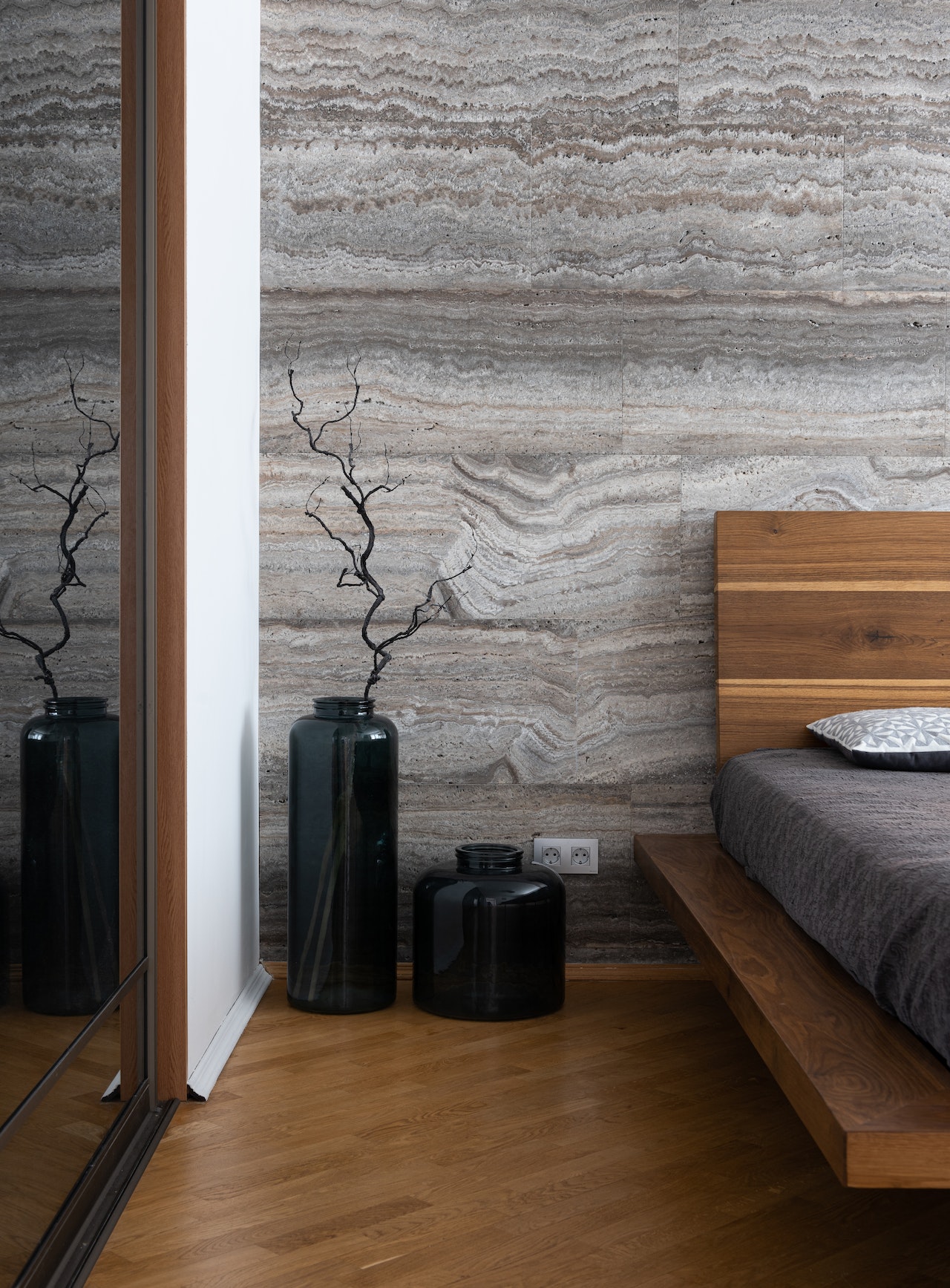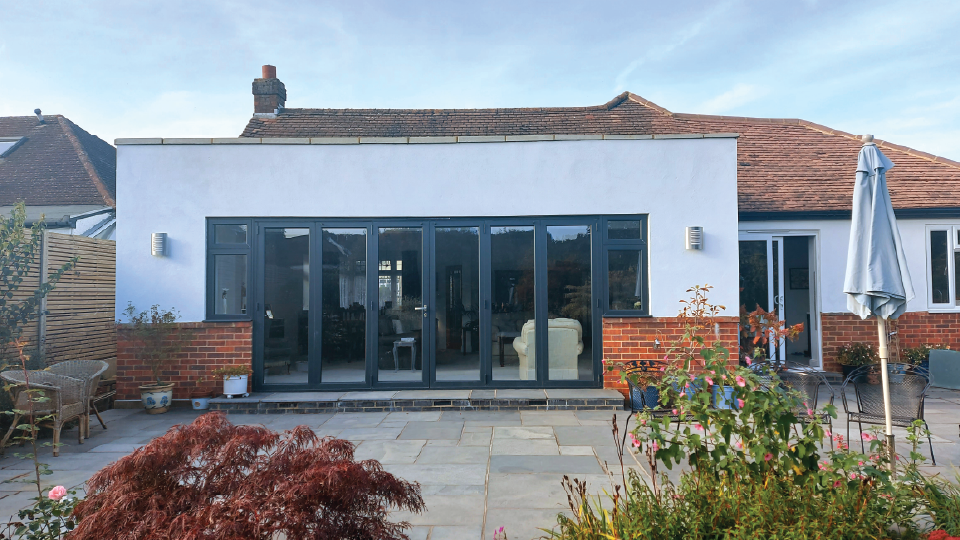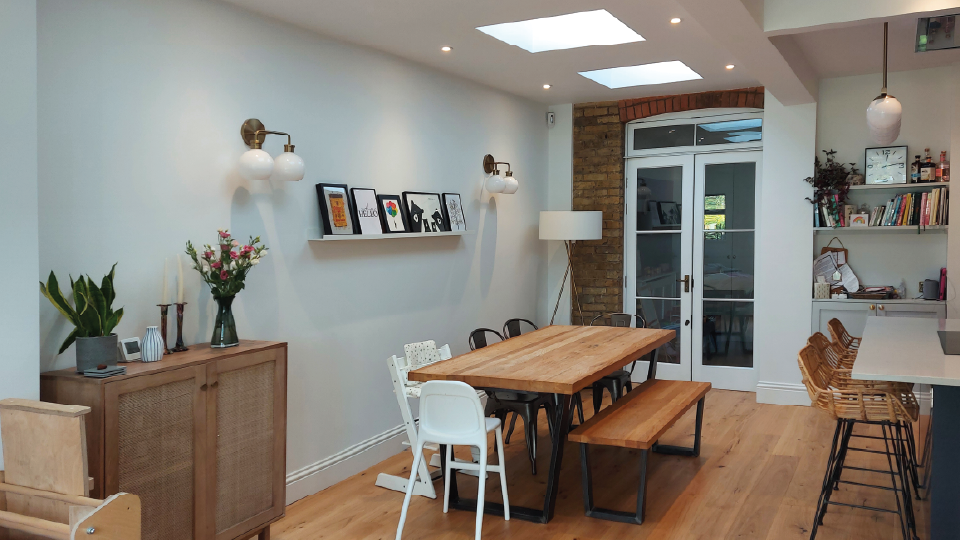Maximising A Small Space: Tips and Tricks for Your Home
Right now it is safe to say that most of us don’t have the ability to make huge home changes, extensions or renovations that give us the big open spaces we’d love. This does mean that more people are looking for ways of maximising a small space within our homes.
So how can we make the most out of what we already have, making more room for entertaining and storage or just keeping things looking more neat and tidy
The choices you make (e.g. where you store your suitcases when not in use) will have a profound impact on how you live in the home. In fact, it is likely you have more space to play with than you think! So let’s take a look at a few things that make that clear.
#1 Think Vertically
One of the simplest ways to create more usable space in a room is to think vertically. We often forget about the walls and ceiling when considering storage solutions but making use of these usually empty areas can free up valuable floor space.
For example, consider installing shelves high up on walls or even better, in alcoves if you have them. This maximises the space and means you can still store things close at hand without them taking up valuable floor space. Similarly, hanging pots and pans from a rack also keeps them within easy reach while freeing up cupboard space below.
When a room looks small and cluttered, it is usually because there is very little floor space to manoeuvre around. Take a look at your current storage options and see if you could simply add another layer. Can you add another bookshelf on top of the one you already have? Could coats be hung up on wall hooks, rather than on a hat stand?
Even simple things like this provide more floor space and remove the so-called clutter from that room. You’re not getting rid of the items, but opening up that immediate area is a great way of maximising a small space.
#2 Create The Illusion of Space
Mirrors are a great way of opening up a room and making it look bigger than it actually is. Not only do they reflect light, making the room seem brighter and airier, but they also create the illusion of a bigger room altogether.
Positioning a mirror so that it reflects a window is particularly effective as it gives the impression there are two windows in the room rather than just the one. This works especially well in smaller bedrooms where natural light can be at a premium.

Similarly, the use of sheer fabrics can create the same effect. Reflection and shine will add a sense of depth to the room, projecting light and colour from wall to wall.
While these tips might not actually create any more space in your home, they will make the rooms appear bigger and help you with maximising a small space.
#3 Opt for Ottoman
When you have a small space, it is important to make the most of every inch. This may mean using multi-purpose furniture that serves more than one purpose. One great example is an ottoman with storage.
Ottomans are already a handy piece of furniture as they can be used as extra seating, a footrest or even a coffee table. But when you add storage into the mix, they become even more useful.
You can use them to store everything from throws and cushions to books and toys, maximising the space in your home while keeping things tidy at the same time.
Ottoman beds are also a fairly inexpensive alternative that many people already have. They are perfect for maximising a small space as they provide you with a place to get rid of those odd bits and bobs that get left all over the place.
Why not utilise the floor space already being taken up for something useful?
#4 Full-Size Furniture Is Not Counter-Productive
When you have a small space, it can be tempting to buy furniture that is specifically designed for smaller rooms. But this might not be the best solution in the long run.
In fact, opting for full-size furniture can actually help with maximising a small space. This is because it eliminates the need for lots of small pieces that clutter the place.
As a result, this creates a more spacious and less cluttered appearance. It gives you somewhere to put everything without having to resort to using every nook and cranny. And it doesn’t mean you have to compromise on style – there are plenty of beautiful, stylish pieces out there that will maximise your home.
These are just some of the ways in which you can maximise a small space. By making use of every inch and utilising storage solutions, you can create a home that is both stylish and spacious. If you want to make the most of a small space, don’t be afraid to go big. It might just be the best decision you ever make.
#5 Don’t be afraid to think outside the box
When it comes to small spaces you might be surprised at what you can achieve.
One of the best ways to maximise a small space is to use it for more than one purpose. If you have a small room that you only use for sleeping in, why not turn it into a bedroom and home office?
You can do this by using a daybed or futon as your main piece of furniture. This way, you can use it as a bed at night and a sofa during the day. Then, all you need to do is add a small desk and some shelving, and you have yourself a functional home office.
Maximising a small space doesn’t have to be difficult. With a little creativity and some smart storage solutions, you can transform your home into a stylish and spacious abode.
A lot of people might not have the ability to make huge home changes, extensions or renovations but that doesn’t mean they can’t maximise the space they already have. With just one of these simple tips, anyone can make their small home appear bigger and brighter.
To summarise here are five great to start maximising a small space:
# Tip One: Let There Be Light
It is important to let in as much light as possible. This will make the room appear bigger and brighter, and instantly gives the illusion of more space.
So, why not open up the curtains and let the natural light flood in? If you don’t have any windows, you could always try using a mirror to reflect the light around the room or buy some decorative lamps.
# Tip Two: Keep It Simple
Less is definitely more especially when trying to get more out of an already small space. This means that you should avoid cluttering the room with too much furniture or too many accessories.
Instead, you should opt for a few key pieces that will serve multiple purposes. For example, an ottoman can be used as both a coffee table and extra seating. Or, a daybed can double up as a sofa and a guest bed.
# Tip Three: Use Vertical Space
It is important to keep in mind to make use of every inch of your rooms including the vertical space. This can be done by hanging shelves on the walls or using tall, slim bookcases.
Not only will this help to maximise the space, but it will also create a stylish feature in the room. Therefore, it’s a win-win situation!
# Tip Four: Get Creative With Storage
You need to remember that storage is key. After all, if you can’t fit everything into the room, it is going to look cluttered and cramped.
There are lots of creative ways to add extra storage to a small space. For example, you could use under-bed storage boxes or install shelves above the doorways. Or, if you’re feeling really adventurous, you could even build a storage bed!
# Tip Five: Think Outside The Box
To think outside the box means utilising the space for more than one purpose or using furniture that serves multiple purposes.
For example, you could turn a small room into a bedroom and home office by using a daybed or futon as your main piece of furniture. Or, you could use vertical space to add extra shelving or storage.
What are you waiting for? Get started today and see what you can achieve! Maximising a small space doesn’t have to be difficult. With a little creativity and some smart storage solutions, you can transform your home into a stylish and spacious abode.
Thank you for taking the time to read this blog. We hope that by following the tips above, you can make your small home appear bigger and brighter in no time. If you would like any more information or ideas why not check out our other blogs.
And if you’d like to see some of our previous work – why not start with this one!





